How To Get A Return On Music Investment
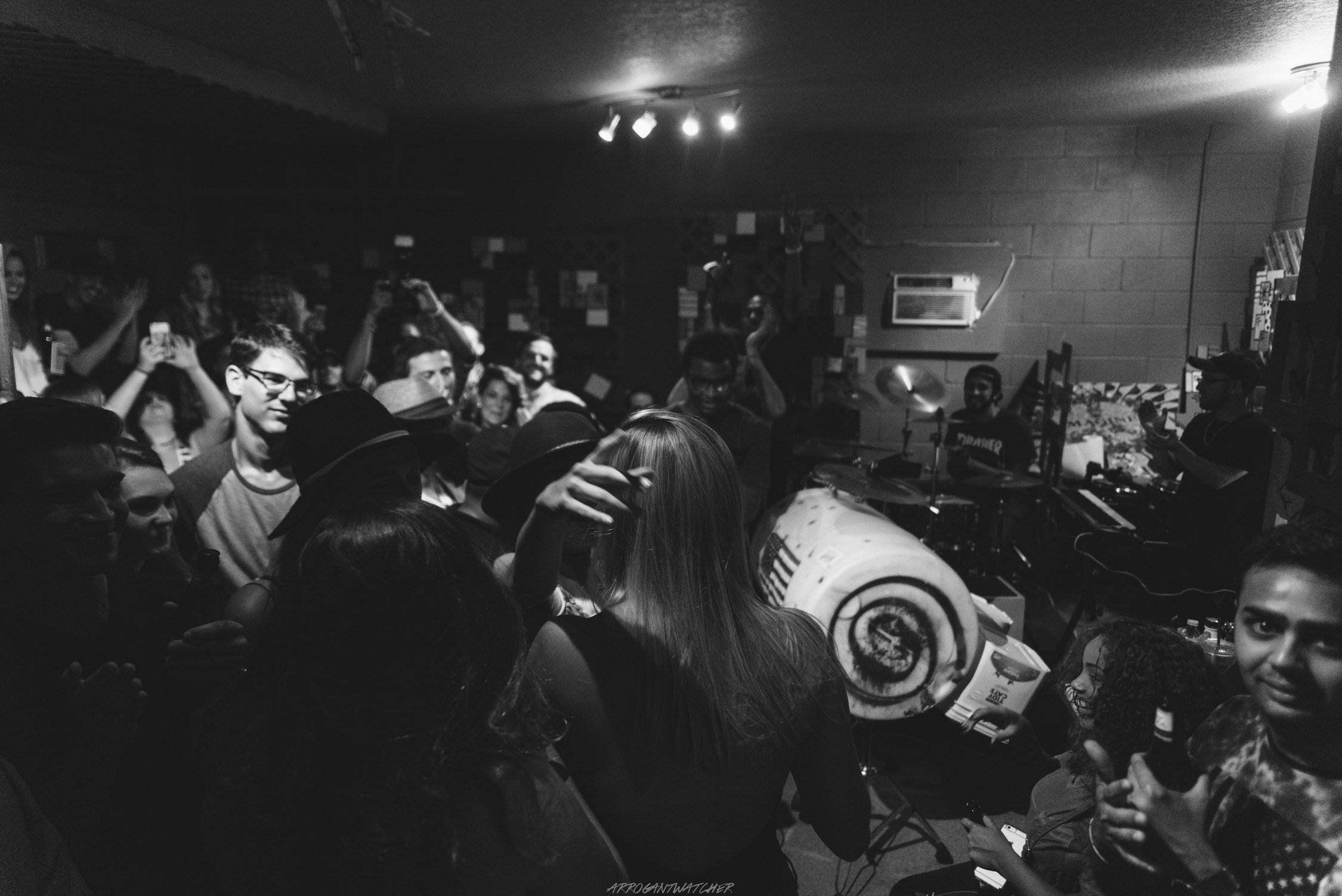
Quickly and easily deploy time-tested marketing campaigns with Indepreneur's IndiePRO training library. Become an IndiePRO member and learn how Indepreneur can help you break out of your current music scene, build a trackable fan base, and sell music and merchandise. Learn more now!
April 30th, 2017 by Circa
You may be thinking “how the hell am I going to make any money”…
Getting an album written, recorded, and mixed is so difficult all on it’s own. Then, you have to worry about releasing it – and you may not even have a plan to sell that album. Often times, independent artists start out releasing their first few albums for free.
If you’re doing any marketing, giving away an album for free can cost you dearly. You can end up paying studio costs AND advertising costs just to generate a little bit of exposure.
And I should know…
As a lifelong Indie and a music marketer, I’ve seen $1000s of dollars spent on album releases that didn’t even INTEND to get a return on music investment. I’ve also orchestrated release campaigns for lesser known artists that generated $1000 for every $100 spent.
So, I know a thing or two about ROI…
The fact is, most of us Indie artists are never even educated on the ins and outs of investment returns. Nobody is really looking to help us understand the business side of things. That’s why we’ve been misrepresented, exploited, and in some cases, blindly embezzled against by music industry types.
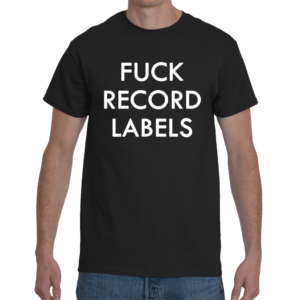
Which is kind of why we do what we do here at Indepreneur. We’re tired of people who suck at marketing telling us that they’ll handle our business. Independent musicians can be some of the most brilliant, capable minds available. But if we’re never encouraged to take charge and be entrepreneurs, we’ll never know what we could have achieved.
So, let’s start by setting the record straight: you can ROI off of your music marketing efforts and it isn’t incredibly difficult to understand or implement. In this article, I will show you how I achieve a return on my music investment, why most artists never do, and what you will need to turn $10 into $100.
First, let’s take a look at…
What Return On Music Investment Looks Like
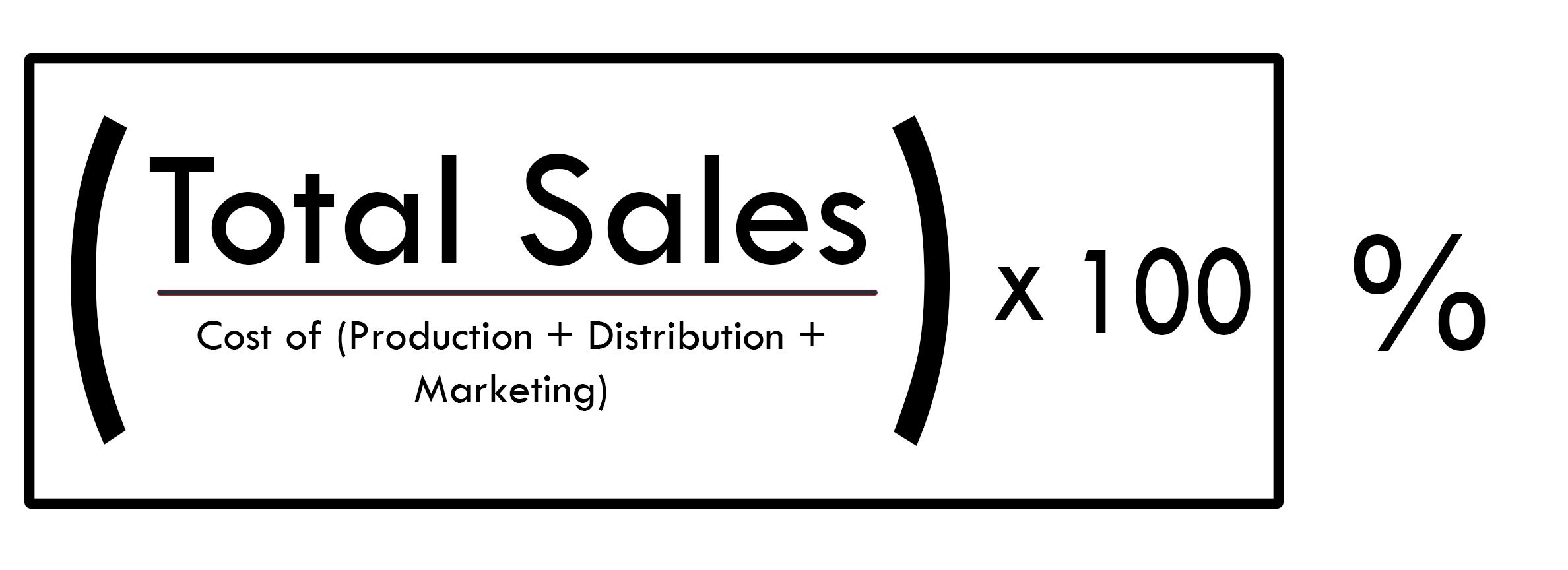
Music marketing ROI is typically measured in the terms above. So let’s take a case study: Nino Bless. Nino spent roughly $3000 in the actual recording process of his latest album.
Initially, when we went to market Nino’s project, we spent $97 getting his website set up in ClickFunnels and $850 marketing his first music video using Facebook Ads. From there, we set up a $7/month MailChimp account and gave away his album for free during a 12-day interactive email campaign to over 800 subscribers. So, before we even got to a place where we could sell a product, Nino was in the hole for $3954.
Let’s see if we can get out of it…
We decided to give away Nino’s entire album, AudioTrip 2, for free in a digital format. We believed Nino’s true supporters would be willing to pay to get a physical, signed copy of the CD. However, we had yet to actually print this physical copy. So, we put AudioTrip 2 physical copies on Nino’s website and offered them directly to those who had already received the album for free.
After the first 24 hours, we had received over $1800 in orders.
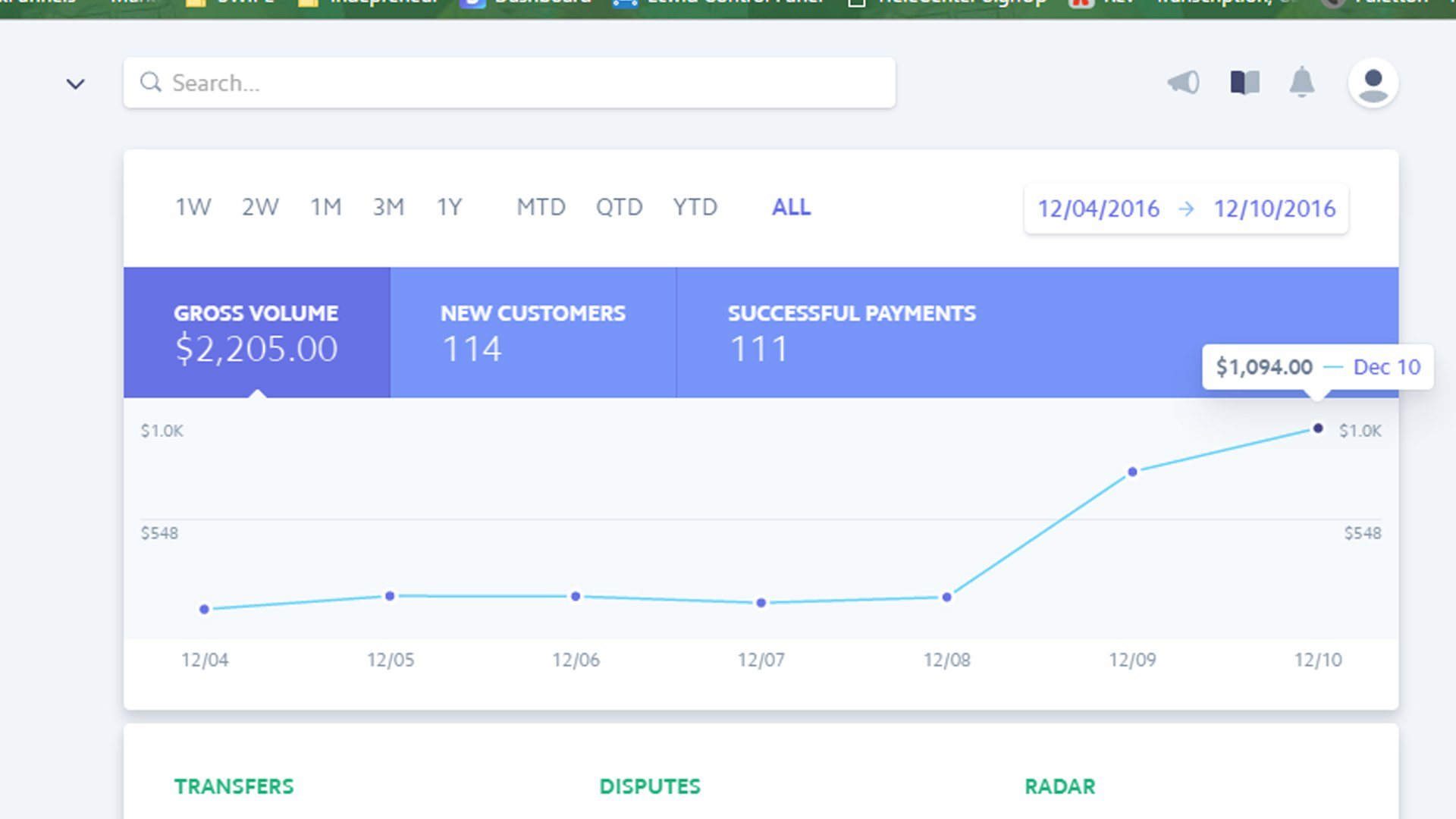
From there, we spent $1200 printing the physical CD and another $2000 (roughly) printing T-Shirts and Hoodies to sell. That brings our total costs to ($3954 + $2200) = $6154
So, after our initial run of sales, we still had some ground to cover. Using a combination of free, organic promotion and consistent communication, we were able to cover the rest of the ground in a 3 month time frame with no additional paid advertising.

Now, with all of our expenses recouped, we had reached a point that is very important to anyone looking to build a business:
When you have covered all the costs of production with your initial run of sales, you should have a significant amount of inventory left over. You should also have a new list of customers who are likely to purchase follow up products. This is where businesses make their profits. And, this is where the math gets only slightly more tricky…
Once you have purchased inventory, your path to ROI becomes pretty straightforward. So what kind of inventory should you be trying to purchase? What are the numbers behind it?
Let’s take a look at what Nino did:
CDs

- We printed 1000 CDs at $1.20 per CD ($1200)
- Each CD sells for $20 retail, but on average the CDs sell for $15 each
- If we sold all 1000 CDs at average price, we would get a return on music investment of $15,000
The individualized ROI for CDs is 1250% with a margin of $13.80 per CD
T-Shirts
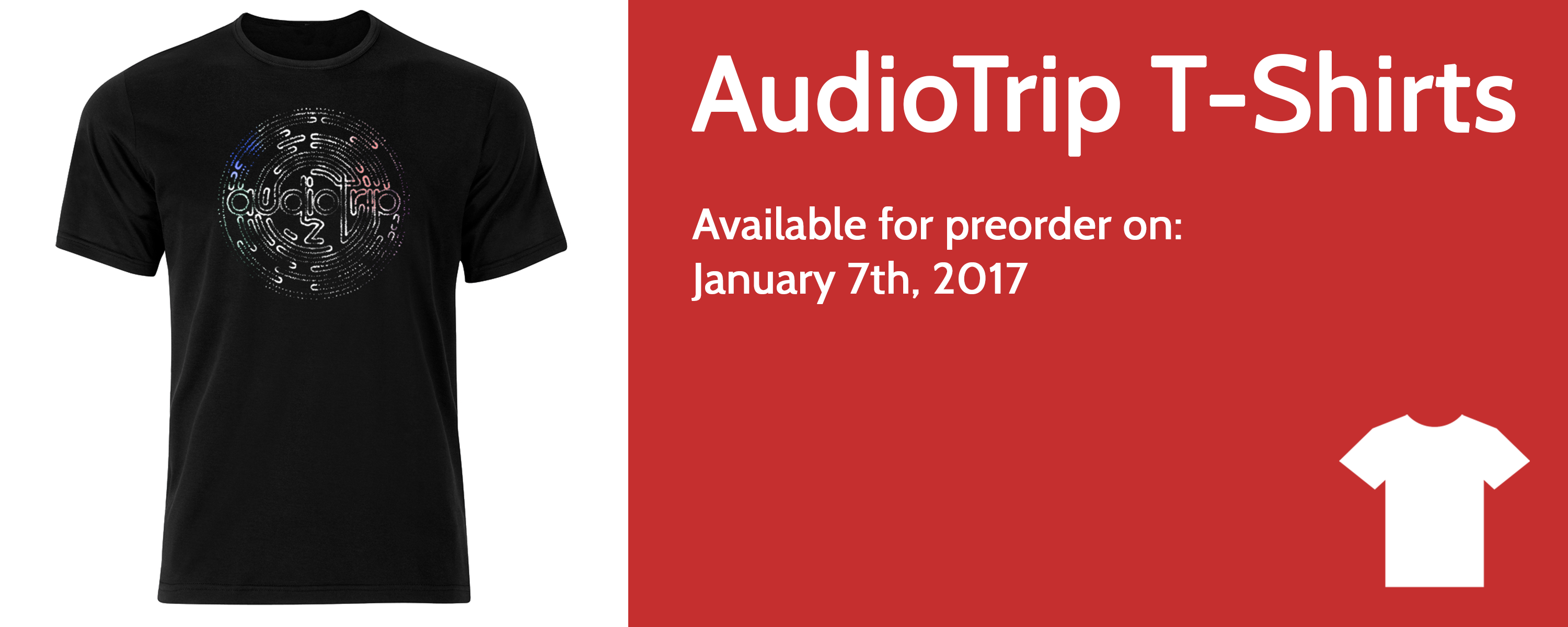
- We printed 80 T-shirts at $7 per shirt ($560)
- Each shirt sells for $25 retail, but on average the shirts sell for $20 each
- If we sold all 80 shirts at average price, we would get a return on music investment of $1600
The individualized ROI for shirts is 285.7% with a margin of $13 per shirt
Hoodies

- We printed 100 hoodies at $14 per hoodie ($1400)
- Each hoodie sells for $47 retail, but on average the hoodies sell for $37 each
- If we sold all 100 hoodies at average price, we would get a return on music investment of $3700
The individualized ROI for hoodies is 264.2% with a margin of $23 per shirt
So, when you add it all up we had sold $7,483 out of a total $20,300 in inventory. This means that we no longer had to pay any production or distribution costs to make profit. The rest is all marketing. We stood to make an additional $12,817 in sales. The only cost left would be associated with driving listeners to the sales page.
That’s why it’s important to know the individualized margin of each product. This number, individualized margin, shows you how much you can spend to make a sale while still making a profit. With AudioTrip 2 CD’s, we were willing to spend up to $8 to make a sale. Our margin was over $13 per CD, so we still made profit.
The reason we were willing to pay so much is because the AudioTrip 2 CD is the first purchase for our customers. We don’t just look at the immediate purchase value, we also look at the lifetime value of a customer.
When someone spends money with you, they are starting a relationship with you that will last far longer than one purchase (if you don’t screw it up).
When someone buys something from you, it is highly likely they will buy a follow up product (next album) or similar product (t-shirt, hoodie, etc.) So, if you expect to make ROI, it will be a lot easier for you when you can estimate lifetime value over immediate value.
To know lifetime value, you need to know your conversion rates.
Conversion Rates
A “conversion rate” is the rate at which visitors to your page take a specific “action”. This action could be signing up to receive free downloads, purchasing a CD, sharing your page on social, or any other action you would like them to take.
Let’s say you have a landing page designed to sell your CD. Now, let’s say you have 100 visitors to that page today. If 2 visitors out of 100 buy your CD, your conversion rate for that sales page is 2%. Simple, right? The picture below is a screen shot of 1 of 25 different versions of Nino’s AudioTrip 2sales page:
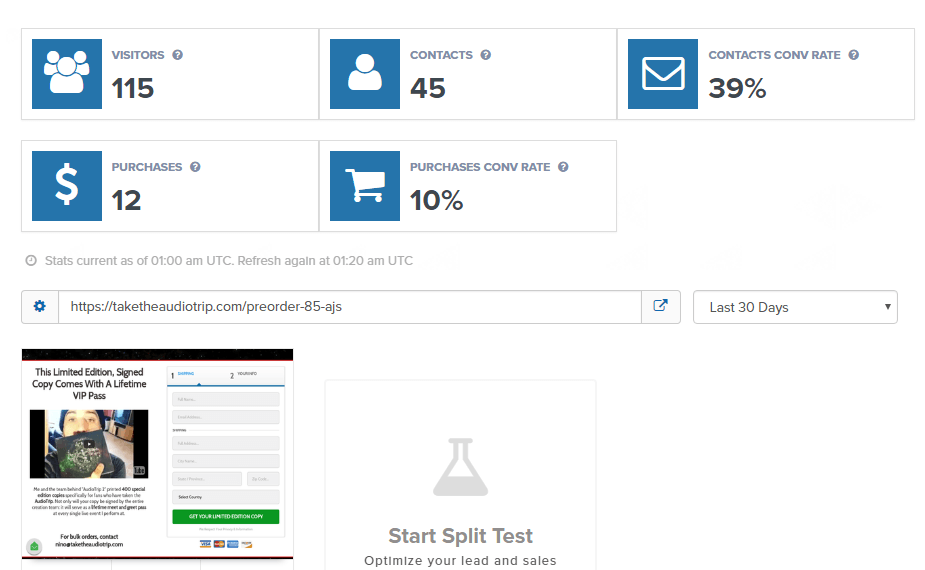
See that number? 10%? That’s the rate at which people purchase the AudioTrip 2 CD after downloading it for free in the 12-day interactive email experience. 20% of people who purchase the CD also purchase a t-shirt as well. That means that, if we get 100 people to register for the AudioTrip, 10 people will buy the CD at $15 ($13.80 profit) and 2 people will buy the t-shirt at $20 ($13 profit).
Since we have this conversion rate, we don’t have to worry about direct selling. We know that, over time, this percentage will not change dramatically. The only way to change this rate is to change the page itself. So, instead of trying to sell the album directly, we can focus on getting people to actually register to receive the free album. 2 of those 10 CD purchasers will also buy a t-shirt. So, when 100 people register for the AudioTrip, we actually make $164 in profit from CDs AND shirts.
Technically, this means that each AudioTrip registration is worth $1.64 in profit, and each new customer is immediately worth $15.40 in profit.
But it gets even deeper…
20% of those who purchase a t-shirt also purchase a hoodie ($23 profit). So, if 1000 people register to the AudioTrip, 100 people will buy a CD. Out of those 100, 20 will also buy a t-shirt. And out of those 20, 4 people will also buy a hoodie. This brings the total profit for 1000 AudioTrip registrations to (100 x $13.80) + (20 x $13) + (4 x $23), or $1,732.
Because of the hoodie sales, each AudioTrip registration is actually worth about $1.73 in profit. That’s why we are willing to pay $8 in advertising to get someone to purchase the AudioTrip 2 CD. We know that, on average, that customer is worth about $16.06. This allows us to essentially print $2 for $1.
Once this kind of predictability is achieved, our only job becomes getting cheaper “conversions”. If we adjust our advertising, we may be able to generate AudioTrip 2 CD sales at $4 instead of $8. This would be like printing $4 for $1. In the chart below, you can see where targeting 18-24 year old males would have gotten us $9 for every $1 spent.
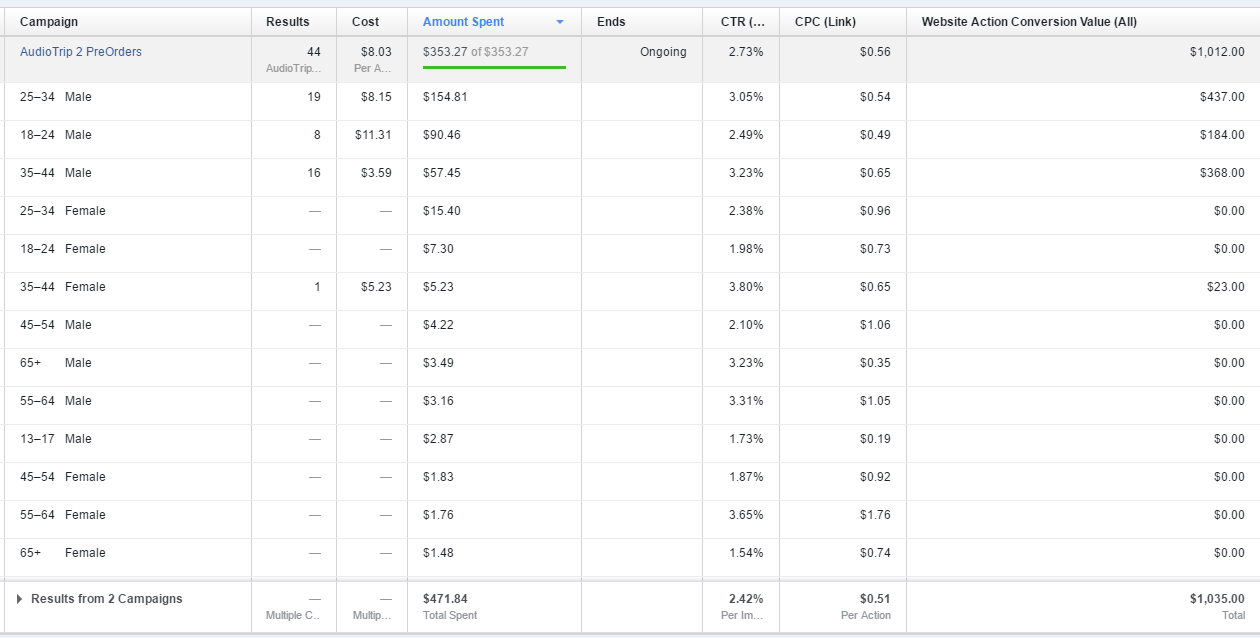
Knowing your conversion rate takes time and patience. You first have to get to break-even. Then, you have to run enough traffic to your pages to get a reliable conversion rate. So, if you want to have a reliable, successful, independent music career, you have to begin with the end in mind…
Start With A Product
Often times, we will launch an artist page without a product ready. We have spent a lot of time in the trenches and we are confident in our ability to ROI. So, we can safely generate awareness for an artist knowing that we will be able to make a return on music investment.
But, if you want immediate ROI from a music marketing campaign, you need to start with the product you want to sell.
As you’ve seen in this article, Nino only offered physical products during this first run of his campaign. Does that mean you need to offer physical products? No. There are tons of independent artists doing really well with purely digital products (album downloads, singles, etc.). We even plan on launching a membership site for Nino in the next two months. A membership site is entirely a digital product.
The benefit of selling a digital product is scalability. Selling 100 digital downloads costs the same as selling 1 digital download. So, you can scale up your efforts and reach more fans without having to worry about shipping anything or buying more inventory. The downside is that you lose out on a valuable, tangible connection with your audience.

Simply put, the relationship you develop with a digital download is MUCH different than the relationship you develop with an autographed CD and an enclosed, personal message.
Whether you choose to sell digital or physical products, you need to have a plan in place. Those wanting to sell physical products will need to have a printer or vendor that can affordably supply them inventory. For the AudioTrip 2 CD, we used Bison Disc in Orlando, FL. Since they are local, we saved a lot of money on shipping the finished product to our facility. I always recommend going with a local printer as shipping bulk inventory can cost you dearly.
Whether you want to offer a physical or a digital product, you’re also going to need a way to make sales online. For Nino, we used ClickFunnels to sell special offers and host our website. For shopping cart functionality, we used Ecwid. These aren’t the only solutions – there’s a whole arsenal of ecommerce solutions out there. These are just the ones that worked for us on this campaign!

So, first, you need to know how you’re going to create your product. Then, you need to have a tested, reliable system for selling that product online. Once you have achieved both of these steps, you know exactly how your “ideal supporter” is going to actually support your music.
But why would someone want to support your music? What are the characteristics of your ideal supporter? What steps are necessary to take someone from a casual listener to this “supporter” level?
You need a system in place that nurtures the relationship you are building with listeners. You need to able to systematically, automatically, and reliably build intimacy and direct connection with your listeners.
You Need A Listener-Nurturing Strategy
There are two ways that Indie artists deal with existing traffic:
1. The Hope & Pray Method
Randomly send messages and offers for purchases to your existing listeners, hoping and praying that they like you enough to buy something. Sales come in intermittently, inconsistently, and unreliably. Money is tight.
2. The Indepreneur (and Others) Method
Create structured, automatic, repeatable processes that consistently and effectively nudge listeners along the journey to supporter. Regularly incentivize and reward listeners to take these next steps using automated processes. Sales come in predictably, frequently, and reliably. Money and new listeners are abundant.
The only difference between these two methods is that one has a system and the other does not. And systems are incredibly important. Let me explain why…
The difference between a frustrating business and a fun business is that frustrating businesses suck up your time with tasks that could otherwise be automated. Most businesses don’t actually become fun or profitable until the business owner develops a system that automatically completes tasks like attracting new customers, creating an initial sale, and selling follow-up products. When it comes to being a full-time musician, your profitability lives and dies on the relationship you are able to create with your fans.
The problem is, a majority of your listeners will not be ready to become supporters at any given time. So, if you’re leveraging all of your time and effort just to start the conversation, you won’t have any time to pay dedicated attention to the people who actually want a deeper friendship.
 Only spend your time on the conversations that matter, like this one
Only spend your time on the conversations that matter, like this oneWithout a system in place, you will be spending a lot of your time manually completing arbitrary tasks that don’t actually require your time. They simply require your ingenuity.
So how do you apply this ingenuity?
Well, let’s think about your listener and the state they are in. These are consumers of your music. In the state they are in, they owe you nothing. They have no motivation, desire, or incentive to support your music. They are not invested. They have no “skin” in the game. This is a unique opportunity.
How do you create a feeling of well-being in your listener that makes them desire a deeper relationship with you? With Nino Bless, we use the AudioTrip experience to nurture the relationship with our listeners.
Now let’s take a look at just a few of the reasons this works so well:
1. Free Value + Reciprocity
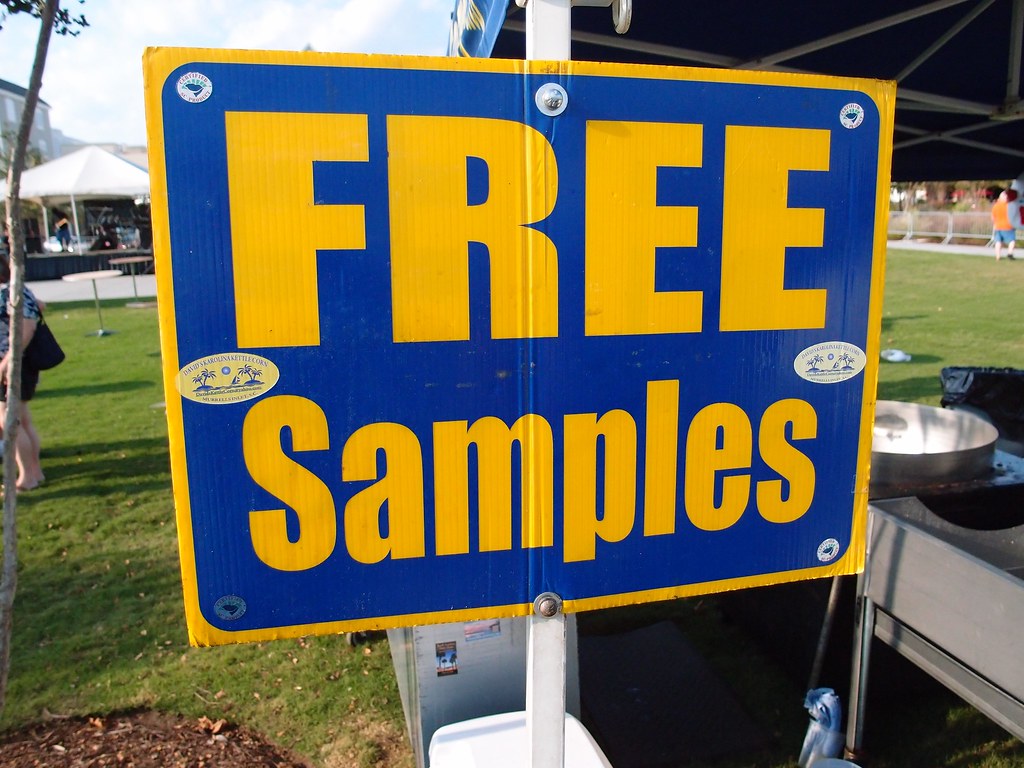
During the AudioTrip sequence, listeners are given an entire album in free digital downloads. They are also taken behind the scenes to understand Nino’s creative process and the journey to make the album.
As human beings, we operate in a system of society. Society has unwritten rules and regulations that keep things moving. These rules are why human civilization has advanced every year, without fail, for thousands of years. One of these unwritten rules is the rule of reciprocity. Simply put, society doesn’t allow moochers.
In human society, if you receive something of value, you are obligated to provide something of value in return. This rule has been hardwired into our brains, our biology, and our social intelligence. So, if you want a listener to take some sort of action, you have to give them a reason. We start by giving them immense value for absolutely free.
2. Interactive Experience
Relationships are not a one way street. That is why the AudioTrip encourages listeners to participate by replying directly, reaching out on Facebook, and expressing their opinion in the comments. People don’t tend to just up and walk out of conversations. Conversations are natural loops – they keep us coming back until they have ended.
So, the AudioTrip starts a conversation by asking questions and urging listeners to answer them in a number of different ways.
3. Habitual Engagement
The AudioTrip is a 12-day interactive experience. When you sign up to the AudioTrip, Nino and I are in communication with you every day for 12 entire days. Looking at the previous two features in this list, we can see that listeners are motivated to stay current with the conversation we are having. So, listeners get in the habit of opening our emails, clicking links, and actually saying something back to us.
Relationships are nothing but a habit.
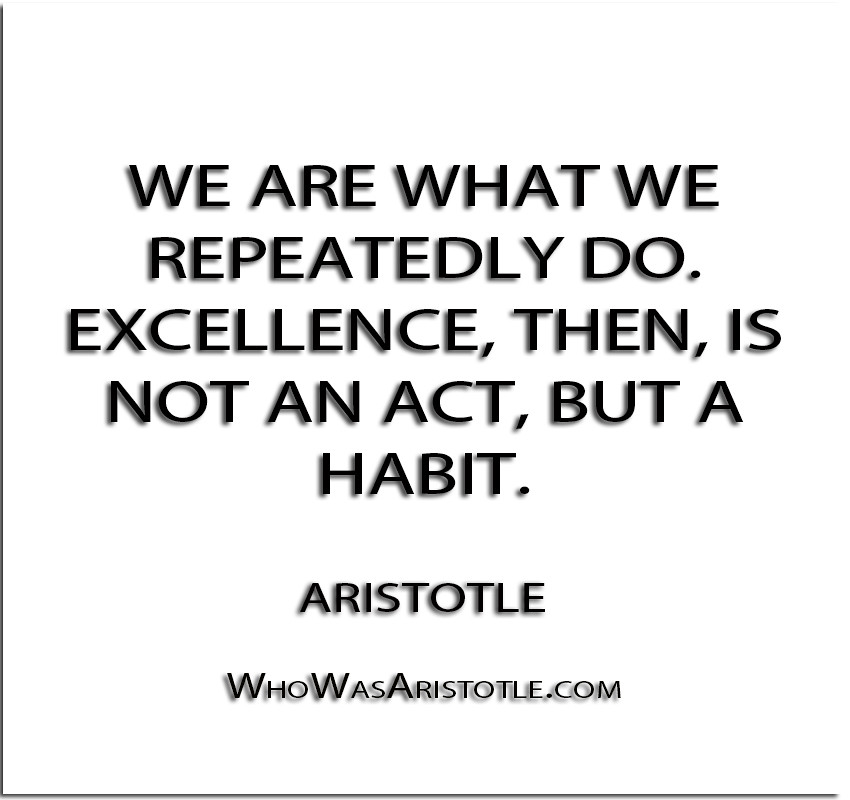
Certain people provide us with a life experience that we want to have again and again. Some people make it really easy to repeat that experience, like that friend who always calls you up. We increase the likelihood of a deeper connection with our listeners by providing them with an incredible experience and making it easy for them to repeat that experience.
You have to figure out how you are going to create a unique experience for your listeners that motivates, encourages, and incentivizes them to achieve a deeper connection with you and your music. Once you have a system in place to deliver this unique experience, you no longer have to worry about manually starting a conversation with your listeners. The experience you provide starts the conversation for you.
But how do you get a casual listener to take the next step and actually participate in this experience?
You Need To Get Permission
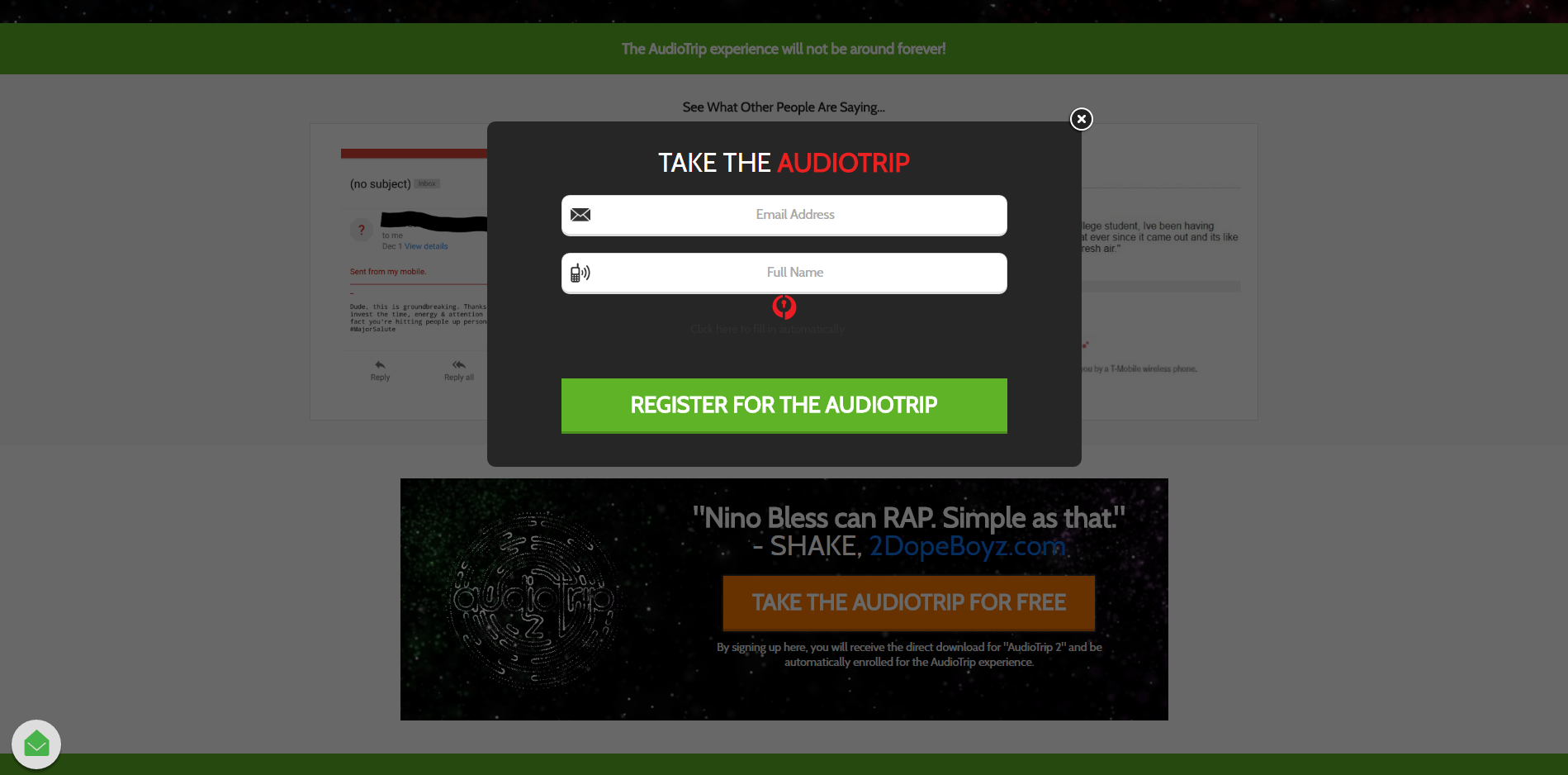
So, now, you have a great experience to deliver to anyone who listens to your music. It’s free, it’s amazing, and it will build a strong relationship between you and your listener. Here’s the problem: nobody cares.
And they shouldn’t. People don’t just start caring about something by virtue of the fact that it now exists.
That is why Sales & Marketing is probably the most important part of any business. You have to get your message out. But there is an important, time-tested innovation in marketing that you absolutely need if you are going to build a large fan base. It’s called “permission”.
Smart marketers do not buy email lists, they build them. They would rather their audience give them permission to market to them before sending them any sales offers or free gifts. Now, the immediate benefit of this is pretty obvious: it’s better to be a polite conversationalist than a loud, arrogant, uninvited asshole. But let’s look at a few of the deeper reasons why getting someone’s permission is absolutely essential for music marketing:
1. Sorting and Sifting

Let’s say you’ve got a Facebook audience of about 1000 people. Are they all die-hard fans? No, probably not. Some of them are relatives, some of them are friends from high school, some of them did you a favor because you were trying to build momentum early on. The point is, a lot of the people who have listened to your music or liked your page are not likely to become an ideal supporter. You want people who discovered your music, enjoyed it, and developed a closer relationship with you as an artist.
You don’t want to have to start a conversation with anybody and everybody. That is incredibly wasteful, time consuming, and confusing. You won’t be able to understand what is and isn’t working, and you will be spending a majority of your time talking to the wrong person. When you require a listener to give you permission to further the relationship, you immediately eliminate the possibility that you will ever be talking to the wrong person.
Permission-based marketing sorts and sifts your listeners to find the right person, every time.
2. Commitment
We don’t try out new things without opening our minds to new possibilities. Even when you try a free sample at the supermarket, you are opening yourself up to the possibility that the food might be so good that you take action and purchase it. Therefore, you are making a small, internal commitment to try the food, critique it, and decide whether or not to purchase it.
When a listener gives you permission to give them an experience, they are making a small, internal commitment to try the experience, critique it, and decide whether or not to support you by purchasing a product or sharing it with their friends.
Really let this sink in.
It’s incredibly important.
You need to understand the art of moving people along the journey from stranger to die-hard fan. That journey rests entirely on a series of small, internal commitments.
3. Technical Reasons

Believe it or not, sending people a bunch of stuff they didn’t ask for is a quick way to ensure that you are not able to send anybody anything. If you are delivering your experience via email without permission, people will complain and your account will get banned. If your listeners are using GMail, Google will figure out what’s going on and send all your emails to the Spam folder.
If you are delivering your experience via Messenger without permission, people will complain and your account will get banned. If enough people complain, Facebook has been known to take some pretty severe actions. If you are delivering your experience via text message without permission, you could get sued!
So aside from not being an asshole, there are plenty of reasons why you want to focus on getting permission from your listeners.
To get permission, you simply have to make an offer and give listeners an action to take. This action can be as simple as clicking a link, typing “Yes”, or entering their name and email and clicking a button. You can use landing pages to allow people to subscribe to your email list. We showed you what we use to create landing pages in a previous article.
You can set up a chatbot with ManyChat to deliver your experience using a feature called “Sequences”. We set up the AudioTrip as a 12-day ManyChat sequence. Then, we let Nino’s listeners know that they could give us permission to send them the AudioTrip by Messaging us the keyword “RED PILL”.
There are literally hundreds of different ways to get permission. I won’t cover them all here. But, I always recommend using your creativity to get permission in a unique way. Don’t just follow what everybody else is doing!
It can be confusing, but it’s incredibly important to build your own permission process. Once you have this system in place, you can focus on distributing it to your warm audience. I won’t go too deep into distributing your offer here, but you should know that we primarily do this using Facebook Ads.

Using Facebook Ads, you can target your existing listeners and market the permission-based offer to them. Because you have already set up the previous systems, you know that this advertising investment will bring you some kind of return on music investment. We are able to leverage Facebook Ads this way because we have already put in a lot of effort to…
Build A Large, Warm Audience of Listeners
You’re probably thinking “This is all great, but… I don’t have a huge audience of listeners. Who is going to want to take my listener-nurturing experience in the first place?”
I know this question is on your mind because it plagues Indies. I talk with Indies all day, every day. So, I know exactly how frustrating this part of the process is. It’s the problem of not knowing where to start. It’s a mystery surrounding how to build a fan base.
Going from 0 to 1000 fans used to be hard AF.
But, now that we have Facebook Ads, building 1000 fans is straightforward, predictable, and comparably easy. You no longer have to spend 4 years touring around the country in a beat up van playing for tiny crowds.
You can actually build a worldwide audience and a profitable business from your laptop in the comfort of your home. Once again…
I know from experience, if you know what I mean…
And, when you have set up an ROI-driven system to automatically transform listeners into supporters and die-hard fans, you can afford to pay for advertising.
But, using Facebook Ads to get new fans is not necessarily easy or cheap to figure out. Once again…
Since this is the problem that plagues Indies the most, this is the first problem that we solve here at Indepreneur.
We have done the hard work of applying Facebook Ads to music, and we have developed a repeatable strategy for gaining hundreds, even thousands of new listeners per week. All you need is a music or performance video to advertise to your target audience. But, advertising and target audiences are not skills that they teach to us Indies. For some reason, people assume that our creativity makes us incapable of being smart business owners.
Indepreneur exists purely to prove those people wrong. So, we have developed a step-by-step walkthrough to teach you, an independent musician, exactly how to target your audience in Facebook and generate thousands of new listeners with Video Ads. We call it the Fan Finder Method.
If you want to learn more about the Fan Finder Master Course (and how to enroll in the course for 35% off), simply click the link below:
Conclusion
Most of the people who find success in the music industry didn’t have a formula. They struggled through it. They dealt with the inefficiency of archaic, irrelevant marketing strategies and business tactics.
For these reasons and more, Indies are led to believe that success as a musician is theory. That it isn’t settled science. That you can’t rely on your own creativity to find success.
Hopefully, we have shown you that getting a return on your music investment isn’t theory. It’s math. If you know the math involved, and you have a system in place, you literally can not fail. You can only learn, tweak, and profit.
At Indepreneur, it is our goal to inspire Independent Artists of all kinds to chase their creative passion. We want to remove the fear around following your dreams. We want to show you how you can build a business around your creativity without luck or hope. If you know another musician or artist who could use some inspiration and motivation, please click the button below and share this article with them.
Let’s turn dreams into realities.
